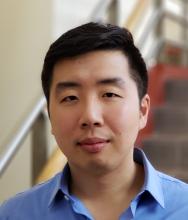
Paul Kim is a Postdoctoral Associate at Rutgers under the direction of Dr. Richard E. Riman (FA 4.1.16). He earned his B.S. in Biomedical Engineering from Northwestern in 2011 and his Ph.D. in Materials Science and Engineering from Rutgers in 2018.
He joined CMI in 2015 as a graduate student under Dr. Riman assisting the team’s efforts to enable science across CMI as a support group via thermodynamic experimentation and simulation and proposing innovative processing solutions. He participated in fundamental studies on the distribution of REEs1 in and efforts to develop methods of leaching REEs from phosphogypsum2. He also furthered the goals of FA 4.1.16 in building of a thermodynamic databank of critical materials by publishing a review article on the properties of REE carbonates and any discernible trends3.
In 2018, Paul transitioned to his current role as the Rutgers Postdoctoral Associate for FA 4.1.16. In this role, he has been responsible for presenting research on behalf of his FA 4.1.16 team (ASU, OLI Systems Inc, and Rutgers) at conferences, developing the framework for establishing internal-CMI collaborations, mentoring undergraduate researchers, and continuing research on innovative processing solutions for CMI. Working alongside his undergraduate researcher, his current work is focused on the continued development of a REE recovery technology based on monoethanolamine (MEA), carbon dioxide, and at-the-time-of-writing, an undisclosed method that enables MEA recycling to supplement or replace existing unit operations4. The recovery process was discovered and optimized through the use of OLI System, Inc’s implementation of aqueous thermodynamic simulations. On-going work is geared towards experimental optimization of processing parameters that would result in greater chemical and product purities.
After Rutgers and CMI, Paul is looking to use his skills and experiences he developed in innovative process and technology development, analytical characterization, and solution thermodynamics to begin his career as a professional scientist/engineer. In the long term, he would like to return to academia in order to pass on his experiences and mentor a future generation of scientists and engineers.
1R. Shivaramaiah, W. Lee, A. Navrotsky, D. Yu, P. Kim, H. Wu, Z. Hu, R. Riman and A. Anderko, Location and stability of europium in calcium sulfate and its relevance to rare earth recovery from phosphogypsum waste, American Mineralogist, 2016, 101, 1854-1861.
2P.J. Antonick, Z. Hu, Y. Fujita, D.W. Reed, G. Das, L. Wu, R. Shivaramaiah, P. Kim, A. Eslamimanesh, M.M. Lencka, Y. Jiao, A. Anderko, A. Navrotsky, and R.E. Riman, Bio- and mineral acid leaching of rare earth elements from synthetic phosphogypsum, The Journal of Chemical Thermodynamics, 2019, 132, 491 - 496, DOI: 10.1016/j.jct.2018.12.034.
3P. Kim, A. Anderko, A. Navrotsky and R.E. Riman, Trends in Structure and Thermodynamic Properties of Normal Rare Earth Carbonates and Rare Earth Hydroxycarbonates, Minerals, 2018, 8(3), 106, DOI: 10.3390/min8030106.
4P. Kim, G. Das, M.M. Lencka, A. Anderko, and R.E. Riman, Rare Earth Element Recovery using Monoethanolamine, Journal of Materials Engineering and Performance, 2020, Accepted.
